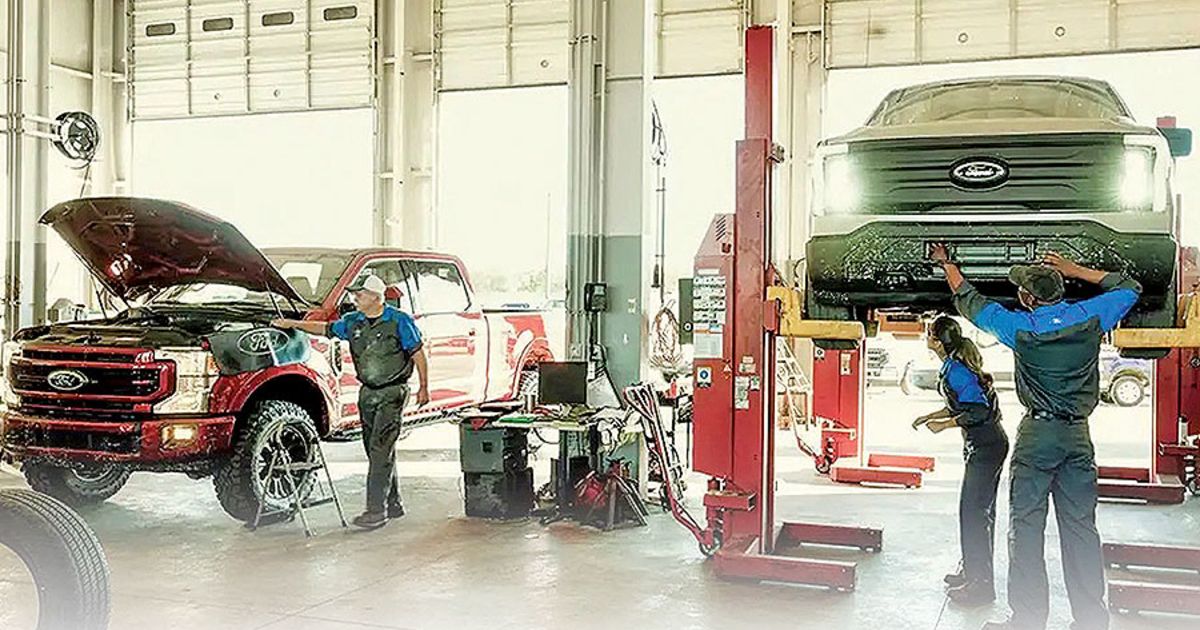
At a time when dealerships are relying more heavily on service departments to maintain profits amid inventory shortages, Ford Motor Co. is attempting to streamline warranty processes to repay claims faster and keep repair work flowing. Most of the changes deal with bureaucratic red tape that frustrated service techs and delayed jobs.
In one instance, Ford removed the requirement for a tech to get prior approval from the factory before starting work on a warranty claim. Another change loosens rules on holding faulty parts that Ford could recall for examination, which took up shelf space and required techs to fill out time-consuming paperwork when Ford requested the part back.
“When you looked at the bureaucracy and complexity of what we were doing, it was kind of like a dog chasing its tail,” David Abatsis, owner of Acton Ford in Massachusetts, told Automotive News. “The goal on Ford’s part has been to keep a wrench in a technician’s hand more than all this involvement with processing and documentation.”
The changes, which have been rolled out in recent months and were based off dealer feedback and internal surveys, are not only meant to speed up repair work but to appease techs working in high-stress environments. It’s part of an effort by Ford to retain workers in a field suffering from a shortage of available bodies.
Dealers “were bringing to our attention to the frustration that some of their teams were having,” said Maggie Morse, Ford global operations warranty manager. “It even led to some of the conversation being about how, if we want to keep our prized technicians, this is going to be a necessary area for us to investigate.”
Eliminating prior approval saves techs at least 30 minutes to an hour on each repair, Morse says. Halting jobs to wait for a signoff from the manufacturer was especially painful for smaller stores with just one or two service bays.
The automaker also drastically cut back the number of one-time-use parts that were required to be documented on warranty claims. The way the system was set up, if a tech failed to note a single one-time-use nut or fastener, a claim could be held up or denied.
Ford also now allows dealerships to send necessary documentation when they initially file a claim; in the past, there would be a back-and-forth between the shop and factory for individual documents dealers say was time-consuming and confusing.
It’s also relaxed auditing rules in an effort to build trust.
Ed Roberts, COO at Bozard Ford-Lincoln in St. Augustine, Fla., said the changes have been well received at his store.
“Ford’s historically been one of the toughest manufacturers to deal with from a warranty process, with prior approvals and verifications,” he said in an interview. “I’ve been in the Ford business for 30 years, and while the warranty area isn’t where we want it to be yet, we have the best communication and time of paying claims now.”
Roberts said getting vehicles back in customers’ hands as quickly as possible is critical now since most dealers don’t have loaner cars because of the ongoing semiconductor shortage.
He said processing warranty claims is vital for his business, which before the changes regularly had $100,000 or more in 30-day-old claims that hadn’t been paid. These days, he said, that number’s down to about $1,000.
“Cash flow is key,” Roberts said. “When you’re tying up several hundred thousand dollars and don’t really have a timeline … it makes it tough to manage the business.”